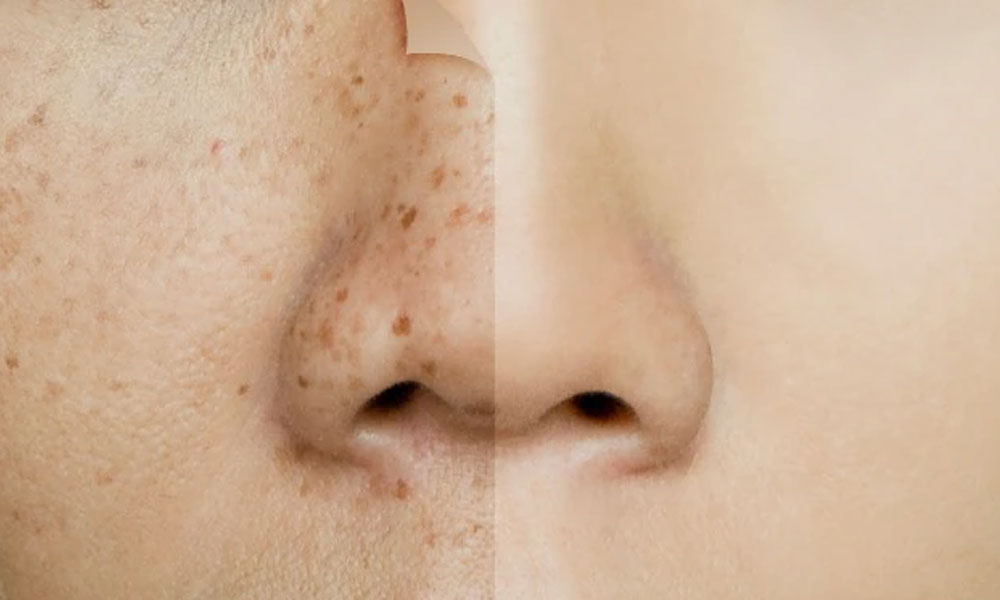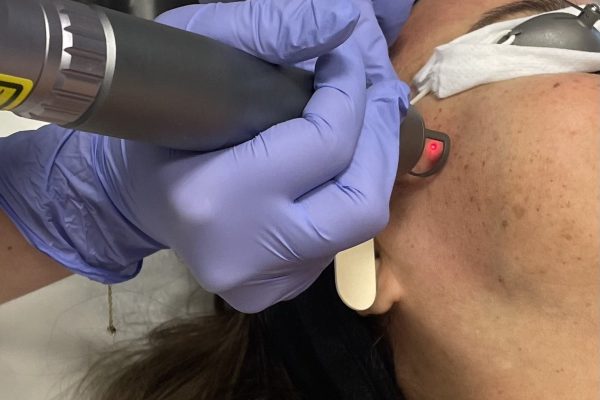Pigmentation Laser Treatments for Clear, Even Skin and Radiant Complexion

Achieving a clear, even complexion with a radiant glow is a common goal for many people dealing with skin pigmentation issues. Pigmentation concerns, such as age spots, melasma, and post-inflammatory hyperpigmentation, can detract from an even skin tone. Fortunately, laser treatments for pigmentation offer an effective solution, targeting these imperfections without the need for invasive procedures. Below, we explore the causes of pigmentation, the available laser treatments, including the powerful Fractional CO2 laser, and what you should remember when undergoing these treatments.
Causes of Pigmentation
1. Sun Damage (Solar Lentigines)
One of the most common causes of pigmentation is prolonged exposure to UV radiation from the sun. This leads to the development of solar lentigines, also known as sun spots or age spots, which typically appear on areas frequently exposed to sunlight, such as the face, hands, and neck. Sun damage not only affects the skin’s surface but also penetrates deeper layers, resulting in uneven pigmentation over time.
2. Hormonal Changes (Melasma)
Melasma is another form of pigmentation, often triggered by hormonal changes. It commonly affects women, particularly during pregnancy or while taking hormonal medications, such as birth control pills. Melasma manifests as large patches of brown or grey pigmentation, especially on the cheeks, forehead, and upper lip. This type of pigmentation can be stubborn and difficult to treat with topical solutions alone.
3. Post-Inflammatory Hyperpigmentation (PIH)
PIH occurs when the skin produces excess melanin as a response to inflammation or injury, such as acne, eczema, or other skin conditions. Unlike melasma, PIH is usually temporary, but it can still leave dark spots on the skin for months. Addressing these spots effectively often requires targeted treatments to break down the excess pigment.

Laser Treatments for Pigmentation
Laser treatments for pigmentation are highly effective in targeting the root cause of pigmentation disorders. These treatments use focused beams of light to break down the melanin in the pigmented areas, allowing the body’s natural processes to gradually eliminate the excess pigment. Below are the most popular and effective laser treatments for pigmentation.
1. Pico Laser
The Pico laser is a cutting-edge treatment for pigmentation, utilizing ultra-short picosecond laser pulses to shatter pigment particles in the skin. It is especially effective for treating melasma and post-inflammatory hyperpigmentation, as it operates at a faster rate than traditional lasers, reducing the risk of heat damage to the surrounding skin. The result is faster recovery, minimal discomfort, and an overall improvement in skin clarity and tone.
2. Q-Switched Nd Laser
Another commonly used laser treatment for pigmentation is the Q-Switched Nd laser. This type of laser emits high-energy light pulses that break down pigmentation into smaller fragments, which are then naturally eliminated by the body. It is particularly effective for treating sun spots and other forms of hyperpigmentation. Its ability to penetrate deep layers of the skin makes it a versatile solution for various pigmentation concerns.
3. Fractional CO2 Laser
The Fractional CO2 laser is a more intense treatment, often recommended for individuals with significant pigmentation issues, such as deep melasma or extensive sun damage. This laser works by creating tiny columns of heat in the skin, triggering the body’s natural healing process. While the treatment can require longer downtime compared to Pico or Q-Switched lasers, its ability to stimulate collagen production and resurface the skin offers comprehensive rejuvenation. The Fractional CO2 laser not only reduces pigmentation but also improves skin texture, making it a powerful option for those seeking overall skin renewal.
What to Remember Before and After Laser Treatments
1. Skin Preparation
Before undergoing any laser treatments for pigmentation, it’s crucial to prepare the skin properly. This includes avoiding sun exposure and using a broad-spectrum sunscreen with a high SPF to protect the skin from further damage. Some dermatologists may recommend a pre-treatment skincare regimen, including lightening agents, to ensure optimal results.
2. Downtime and Recovery
The downtime for laser treatments varies depending on the type of laser used. Pico and Q-Switched lasers usually have minimal downtime, with only slight redness and swelling that typically subsides within a day or two. Fractional CO2 laser treatments, on the other hand, require a longer recovery period, ranging from 5 to 7 days. During this time, it’s essential to follow your provider’s aftercare instructions to avoid complications, such as infections or prolonged irritation.
3. Multiple Sessions May Be Required
Laser treatments for pigmentation often require multiple sessions to achieve the desired results. While some individuals may see a significant improvement after one session, others may need 3 to 5 treatments spaced several weeks apart. The number of sessions needed depends on the severity of the pigmentation and the type of laser being used. It’s important to follow through with the recommended treatment plan to see the best long-term results.
4. Long-Term Skin Care Maintenance
Post-treatment care is critical to maintaining the results of laser treatments. Regular use of sunscreen is non-negotiable to prevent new pigmentation from forming, as UV exposure can easily reverse the benefits of the treatment. Incorporating brightening products, such as vitamin C serums and retinoids, into your skincare routine can also help enhance the effects of the laser treatment, keeping your skin clear and radiant.
Final Thoughts
Laser treatments for pigmentation offer an advanced, non-invasive solution to achieving clear, even skin. Whether it’s addressing sun damage, hormonal pigmentation, or post-inflammatory hyperpigmentation, these treatments can effectively break down excess melanin and promote a radiant complexion. With options like Pico Laser, Q-Switched Nd Laser, and Fractional CO2 Laser, there is a tailored solution for every skin type and pigmentation concern. However, preparation, aftercare, and long-term skin maintenance are key to ensuring the best possible results.
By understanding the causes of pigmentation and choosing the appropriate laser treatment, anyone can enjoy a brighter, more even complexion without undergoing surgical procedures. Keep in mind that each individual’s skin responds differently, so it’s essential to consult with a skincare professional to determine the most suitable laser treatment plan for your needs.







